Texture Types
There are far too many texture types and classes of material appearances for me to enumerate them with any sort of thoroughness. Given that, there is a much smaller set of texture types that are found over and over in nature and man-made structures.
Most of the following textures are types that are used for buildings, bridges, and other man-made items in a game world.
Irregular
Irregular textures tend to have a general disorder and random appearance, like that shown in Figure 11.22. Dirt and grass are examples of irregular textures. Quite often irregular textures are combined with other, different irregular textures in order to give a weathered or damaged appearance to an area or surface.
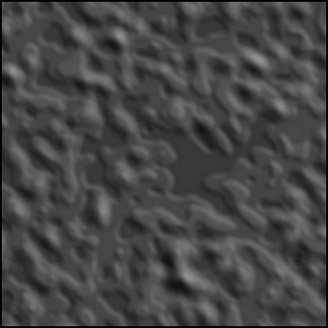
Figure 11.22: An irregular texture.
Rough
Rough textures, as shown in Figure 11.23, sometimes have somewhat the same sense about them as irregular textures. They are often used as tiles on a surface like a sidewalk or rough concrete walls.
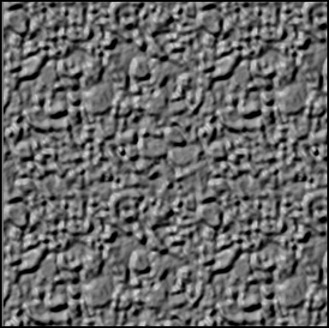
Figure 11.23: A rough texture.
Pebbled
Pebbled textures are another example of textures often used for paved surfaces and stone walls. Tarmacadam pavement is an example of a finely pebbled surface when viewed from a distance of about 5 or 6 feet. Figure 11.24 shows a more obvious pebbled texture that could be used for a wall or decorative planter.

Figure 11.24: A pebbled texture.
Woodgrain
Figure 11.25 shows a woodgrain texture that has many highly variant bundles of lines ranging from fine to coarse that run roughly parallel to each other, sometimes interrupted by swirls and knots. Some kinds of stone have similar appearances.
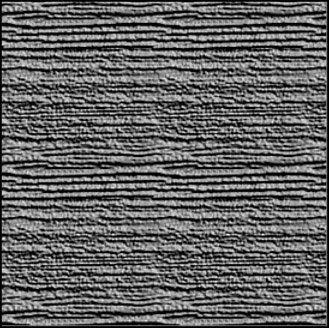
Figure 11.25: A woodgrain texture.
Smooth
We all know when something is smooth—there are no discernable bumps or irregularities to our touch. Depicting smoothness in textures can be a little difficult. We usually create a rather bland surface look and then introduce a few soft and mild irregularities in order to emphasize the smoothness. Figure 11.26 shows a smooth texture.

Figure 11.26: A smooth texture.
Patterned
Patterned textures are pretty straightforward. The intent is not necessarily to convey the contour, bumpiness, or feel of a surface, but rather to represent regular shapes or patterns that appear on an item. Figure 11.27 depicts a pattern that could be used to represent the louvers of an air duct in a wall.
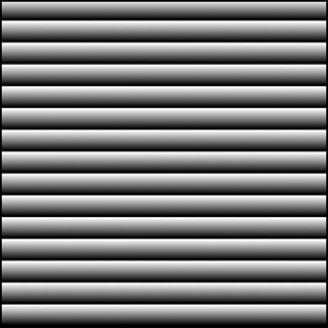
Figure 11.27: A patterned texture.
Fabric
Fabric textures emulate the appearance of things like canvas or carpet. Fabrics may be woven or not, but they all tend to exhibit fine repetitive shapes. Figure 11.28 shows a woven fabric texture that could be canvas.
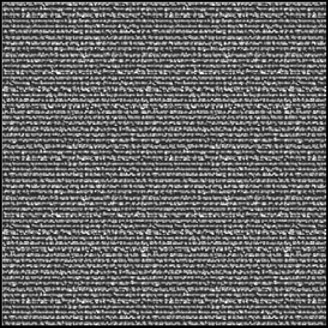
Figure 11.28: A fabric texture.
Metallic
Metallic textures tend to have a dominant color, with a strong dark shadow that follows the outer contours of the metallic object and a bright accent color that runs along raised surfaces. Figure 11.29 shows a texture that could be used for a metal tube.
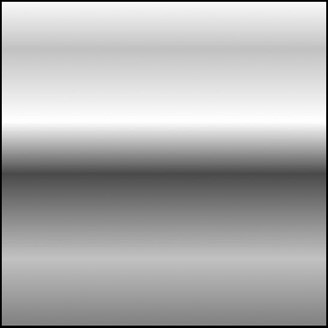
Figure 11.29: A metallic texture.
Reflective
A reflective texture simulates the effect of a light source in the scene reflecting strongly off the surface of the textured object. Figure 11.30 is such a texture that might be depicting a bright overhead light reflecting off a window.
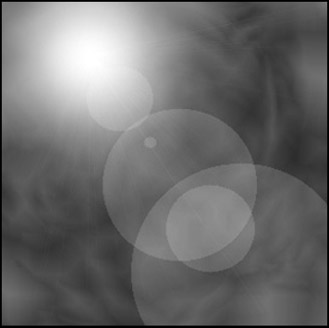
Figure 11.30: A reflective texture.
Plastic
Plastic textures are similar to metallic textures in their manner of shading and highlighting. Plastic tends to have more of an oily appearance to it at times, so the shading and highlights are often more sinuous. As shown in Figure 11.31, the highlights tend to be less clearly defined than with metallic textures, while the light source often appears as a distinct highlight.
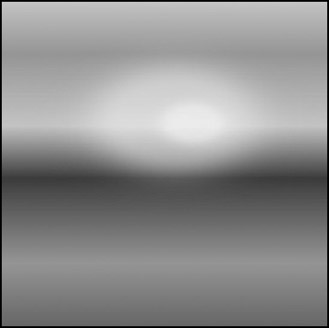
Figure 11.31: A plastic texture.
EAN: 2147483647
Pages: 197
- An Emerging Strategy for E-Business IT Governance
- A View on Knowledge Management: Utilizing a Balanced Scorecard Methodology for Analyzing Knowledge Metrics
- Technical Issues Related to IT Governance Tactics: Product Metrics, Measurements and Process Control
- Governance in IT Outsourcing Partnerships
- Governance Structures for IT in the Health Care Industry